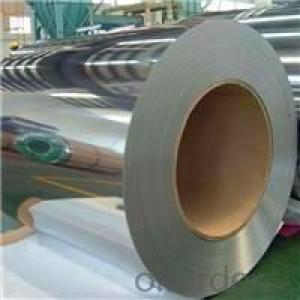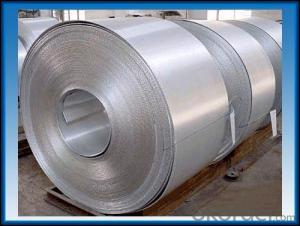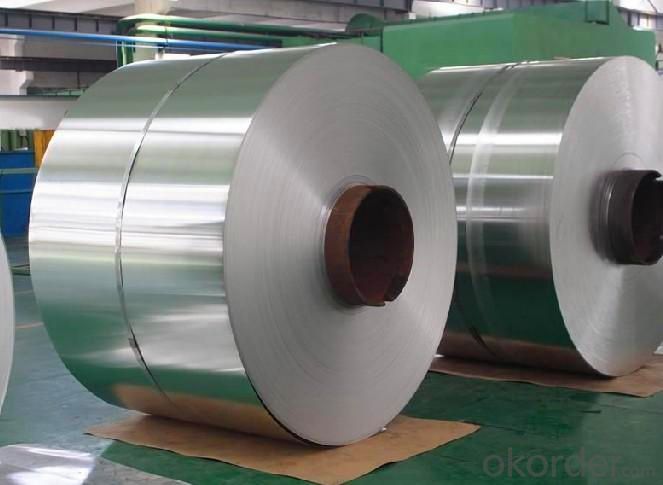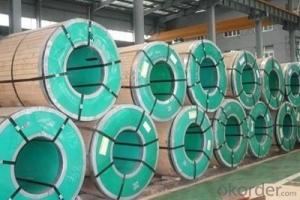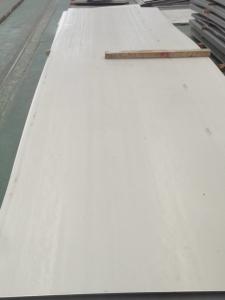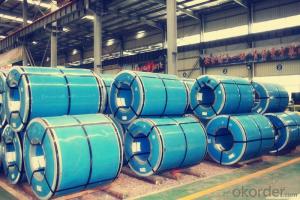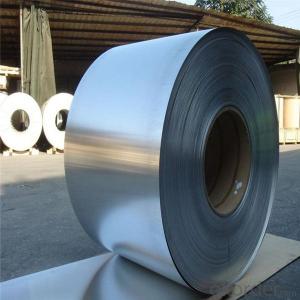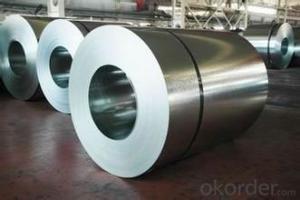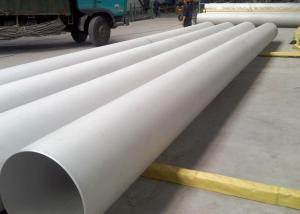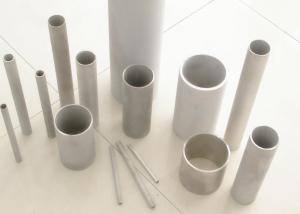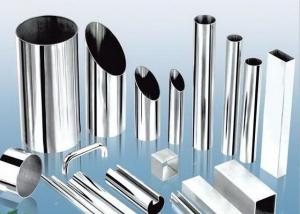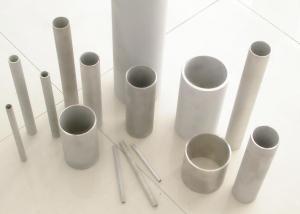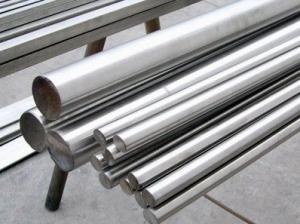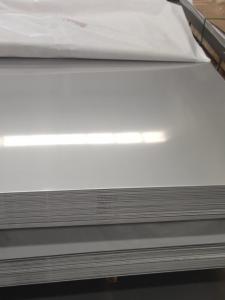304/304L cold rolled stainless steel coil with different thickness
- Loading Port:
- China main port
- Payment Terms:
- TT OR LC
- Min Order Qty:
- 100 m.t
- Supply Capability:
- 10000 m.t/month
OKorder Service Pledge
OKorder Financial Service
You Might Also Like
Stainless Steel Coils and Sheets
Features of Stainless Steel Coils and Sheets:
· Accurate dimension
· Suitable for heavy duty operation
· Minimum maintenance
Specifications of Stainless Steel Coils:
1. Standard: ASTM A240, JIS G4304, G4305, GB/T 4237, GB/T 8165, BS 1449, DIN17460, DIN 17441
2. Grade: 200series&300series&400series
3. Thickness: 0.4mm-50mm
4. Width: 1000/1219/1500/1800mm
5. Length: min 1m
6. Surface finish: 2B, BA, 8K, 6K, Mirror Finished, No1, No2, No4, Hair Line with PVC
7. Manufacture technology: cold drawn/cold rolled/hot rolled
Specifications of Stainless Steel Sheets:
1. Material: 200series&300series&400series
2. Standard: JIS, AISI, ASTM, GB, DIN, EN
3. Thickness: 0.3-100mm or as customer’s requirement
4. Width: 1500-2200mm or as customer’s requirement
5. Length: 1000-6000mm or as customer’s requirement
6. Surface: 2B, BA, No.1, etc
7. Technical processing: Hot Rolled/Cold Rolled
8. Decorative:
Mirror, No.4, HL NSP, Bead Blast, Vibration,
HL Gold, Mirror Gold, Vibration Gold NSP,
No4 Copper NSP, Mirror Copper, Bead Copper,
HL Brass, Mirror Brass, Bead Brass,
HL Black, Mirror Black, Bead Black NSP,
HL Bronz, Mirror Bronze, Vibration Bronze,
Mirror Etched, HL Etched Copper, Mirror Black Etched, Mirror Etched Gold.
Packing Information of Stainless Steel Coils and Sheets:
Please don’t worry that our products are packed, stored, transported according to the international regulation. We do care about the quality of our products; even some little details are paid attention to.
We wrap the stainless steel products with anti-rust paper and steel rings to prevent damage. Identification labels are tagged according to standard specification or customer's instructions. Special packing is available as per customer's requirement.
Plus, our storage racks are made of wood. Other kinds of metals are settled in other places, far from the stainless steel. Any unwanted chemical reaction can be prevented.
Applications of Stainless Steel Coils and Sheets:
1.Automotive:Automotive trim and molding/Difficult-to-form exhaust-system components, tubular manifolds, mufflers/Exhaust manifold and other exhaust-system components, catalytic converter shells, clamps
2. Construction: Gutters and downspouts, roofing, siding
3. Kitchenware: Cooking utensils, dishwashers, ovens, range hoods, refrigerators, skewers
4. Chemical processing: Oil refinery equipment, oil burner and heater parts
5. Appliances: Hot water tanks, residential furnaces
6. Power generation: Heat Exchanger tubing
7. Farming: Dry fertilizer spreaders/Farm animal pens
Technical notes:
Surface Finish | Definition | Application |
2B | Those finished, after cold rolling, by heat treatment, pickling or other equivalent treatment and lastly by cold rolling to given appropriate luster. | Medical equipment, Food industry, Construction material, Kitchen utensils. |
BA | Those processed with bright heat treatment after cold rolling. | Kitchen utensils, Electric equipment, Building construction. |
NO.3 | Those finished by polishing with No.100 to No.120 abrasives specified in JIS R6001. | Kitchen utensils, Building construction. |
NO.4 | Those finished by polishing with No.150 to No.180 abrasives specified in JIS R6001. | Kitchen utensils, Building construction, Medical equipment. |
HL | Those finished polishing so as to give continuous polishing streaks by using abrasive of suitable grain size. | Building Construction. |
NO.1 | The surface finished by heat treatment and pickling or processes corresponding there to after hot rolling. | Chemical tank, pipe. |
- Q: How to calculate the weight of stainless steel plate?
- Stainless steel not only refers to a stainless steel, but more than one hundred kinds of industrial stainless steel, the development of each kind of stainless steel in its specific application areas have good performance. The key to success is to find out what the purpose is, and then determine the correct type of steel.
- Q: How do you prevent pitting on stainless steel sheets?
- To prevent pitting on stainless steel sheets, there are several steps you can take: 1. Ensure proper cleaning and maintenance: It is important to regularly clean the stainless steel sheets using mild soap or a non-abrasive cleaning solution. Avoid using harsh chemicals, bleach, or abrasive cleaners as they can harm the protective layer on the surface. After cleaning, make sure to thoroughly rinse and dry the sheets to eliminate any residue that could lead to pitting. 2. Avoid contact with corrosive substances: Although stainless steel is highly resistant to corrosion, prolonged exposure to certain chemicals or substances can still cause pitting. It is advisable to avoid contact with chloride-based cleaners, strong acids, or solutions containing high concentrations of salt. If accidental contact occurs, immediately rinse the sheets with clean water and dry them thoroughly. 3. Protect against physical damage: Pitting can occur on stainless steel sheets if they get scratched or damaged. It is crucial to handle and install the sheets with care to prevent any sharp or abrasive objects from scratching the surface. During transportation and storage, consider using protective films or covers to minimize the risk of physical damage. 4. Apply a protective coating: To enhance the natural corrosion resistance of stainless steel and reduce the risk of pitting, you may want to consider applying a protective coating or passivating treatment to the sheets. It is recommended to consult with a professional or supplier to determine the most suitable coating or treatment for your specific stainless steel grade and application. 5. Conduct regular inspection and maintenance: It is important to periodically inspect the stainless steel sheets for any signs of pitting or corrosion. Promptly address any issues by cleaning, repairing, or replacing the affected areas. Regular maintenance and inspection will help identify potential problems early on and prevent them from worsening. By following these preventive measures, you can minimize the occurrence of pitting on stainless steel sheets, extend their lifespan, and maintain their aesthetic appeal.
- Q: How are stainless steel sheets produced?
- Stainless steel sheets are produced through a series of manufacturing processes that involve various stages. The production of stainless steel sheets typically begins by melting raw materials such as iron ore, coal, and limestone in a blast furnace. This process is known as primary steelmaking and results in the production of molten iron. The molten iron is then transferred to a basic oxygen furnace (BOF) or electric arc furnace (EAF) where it is mixed with scrap steel and other alloys to adjust the desired chemical composition. The molten mixture undergoes a refining process to remove impurities and achieve the desired quality of stainless steel. Once the refining process is complete, the molten stainless steel is cast into slabs or billets. These large blocks of solidified metal are then heated and rolled into thin sheets through a process called hot rolling. Hot rolling involves passing the stainless steel through a series of rollers to reduce its thickness and shape it into the desired dimensions. After hot rolling, the stainless steel sheets undergo a process known as annealing. This process involves heating the sheets to a specific temperature and allowing them to cool slowly. Annealing helps to relieve internal stresses and improve the material's mechanical properties, such as strength and ductility. Following annealing, the stainless steel sheets may undergo further processing such as cold rolling, which involves passing the sheets through a series of rollers at room temperature to achieve the desired thickness and surface finish. Cold rolling also enhances the stainless steel's mechanical properties and improves its surface quality. Once the sheets have been cold rolled, they are typically coated with a protective film or passivation layer to prevent corrosion. This film acts as a barrier against environmental factors and helps maintain the longevity of the stainless steel sheets. Finally, the stainless steel sheets are cut into the desired sizes and shapes using various cutting techniques such as shearing or laser cutting. The sheets may undergo additional surface treatments, such as polishing or brushing, to achieve the desired aesthetic appearance. In summary, stainless steel sheets are produced by melting raw materials, refining the molten metal, casting it into slabs, hot rolling to reduce thickness, annealing to improve properties, cold rolling for further refinement, coating for corrosion resistance, and finally cutting and surface treatment to achieve the desired product.
- Q: What are the different types of stainless steel sheet surface patterns for architectural purposes?
- Architectural purposes often call for the use of various surface patterns on stainless steel sheets. These patterns are achieved through different techniques, resulting in distinct appearances. Here are some of the popular surface patterns: 1. Brushed: By using a fine abrasive material, the stainless steel sheet is brushed to create a smooth texture with visible brush lines in one direction. This sleek and contemporary pattern is widely favored. 2. Mirror: Achieved by polishing the stainless steel sheet to a high shine, the mirror surface pattern reflects light like an actual mirror. It is commonly chosen for applications where aesthetics and visual impact are important. 3. Embossed: The surface of embossed stainless steel sheets features a raised pattern or design. This is achieved by pressing the sheet between rollers engraved with a specific pattern. It adds texture and depth to architectural applications. 4. Perforated: Perforated stainless steel sheets have evenly distributed small holes or perforations. These can come in various shapes and sizes, allowing for airflow, light transmission, and decorative effects. Façades, screens, and decorative elements often utilize perforated stainless steel sheets. 5. Etched: Etched stainless steel sheets feature designs or patterns that are chemically etched onto the surface. An acid-resistant material is applied and then selectively removed with acid, leaving behind intricate and detailed designs. This pattern is ideal for artistic and decorative purposes. 6. Hammered: Hammered stainless steel sheets have a textured surface resembling hammered metal. This effect is achieved by using a special hammer or mallet to create indentations and surface irregularities. It adds a rustic and handcrafted look to architectural projects. These examples showcase the variety of stainless steel sheet surface patterns commonly used in architecture. Each pattern possesses its own visual and textural qualities, enabling designers and architects to choose the most suitable option for their specific project requirements.
- Q: Can stainless steel sheets be used for decorative screens?
- Yes, stainless steel sheets can be used for decorative screens. Stainless steel is a versatile material that can be easily manipulated into various shapes and designs, making it suitable for decorative purposes. Its durability, resistance to corrosion, and aesthetic appeal make it a popular choice for creating decorative screens in homes, offices, and other spaces.
- Q: Can stainless steel sheets be used for architectural mesh?
- Yes, stainless steel sheets can be used for architectural mesh. Stainless steel is a popular material choice for architectural applications due to its durability, corrosion resistance, and aesthetic appeal. Stainless steel sheets can be perforated, woven, or expanded to create intricate mesh patterns that are commonly used in architectural projects such as facades, sunscreens, balustrades, and decorative screens. The versatility of stainless steel allows for various design possibilities, and its strength ensures long-lasting performance. Additionally, stainless steel mesh can be customized in terms of aperture size, wire diameter, and finish to meet specific architectural requirements.
- Q: Are stainless steel sheets suitable for corrosive environments?
- Yes, stainless steel sheets are suitable for corrosive environments. Stainless steel is known for its corrosion resistance properties, making it an ideal material for applications where there is exposure to moisture, chemicals, or other corrosive substances. This is due to the presence of chromium in stainless steel, which forms a protective layer on the surface, preventing the material from rusting or corroding. Additionally, stainless steel sheets are available in different grades, such as 304 and 316, which offer varying levels of corrosion resistance. Therefore, stainless steel sheets are commonly used in industries such as chemical processing, marine environments, food and beverage processing, and pharmaceuticals, where protection against corrosion is crucial.
- Q: Can stainless steel sheets be used for outdoor signage or billboards?
- Yes, stainless steel sheets can be used for outdoor signage or billboards. Stainless steel is highly durable, weather-resistant, and corrosion-resistant, making it an excellent material choice for outdoor applications. It can withstand harsh weather conditions, including rain, snow, and UV exposure, without deteriorating or fading. Additionally, stainless steel sheets can be easily fabricated and customized to create visually appealing and long-lasting outdoor signage or billboards.
- Q: What is the difference between stainless steel sheets and stainless steel plates?
- The main difference between stainless steel sheets and stainless steel plates lies in their thickness. Stainless steel sheets are typically thinner, with a thickness ranging from 0.4mm to 6mm, while stainless steel plates are thicker, with a thickness starting from 3mm and going up to several inches. Additionally, stainless steel plates are often used for structural purposes or heavy-duty applications, while stainless steel sheets are commonly used for decorative purposes, cladding, or smaller projects.
- Q: How do stainless steel sheets differ from other types of sheets?
- Stainless steel sheets differ from other types of sheets primarily because of their composition and unique properties. Unlike other types of sheets that are made from materials like aluminum, brass, or copper, stainless steel sheets are made from an alloy of iron, chromium, and other elements. One of the key differences is the corrosion resistance of stainless steel sheets. The addition of chromium to the alloy creates a passive layer on the surface of the sheet, which protects it from rust and corrosion. This makes stainless steel sheets highly durable and suitable for various applications, especially in environments exposed to moisture, chemicals, or extreme temperatures. Another distinguishing factor is the strength and toughness of stainless steel sheets. They have excellent mechanical properties, including high tensile strength, which makes them resistant to deformation and damage. This makes stainless steel sheets more reliable and long-lasting compared to other types of sheets. Additionally, stainless steel sheets offer a wide range of aesthetic options. They can be easily customized with different finishes, such as brushed, polished, or embossed, to achieve various appearances and textures. This versatility in design makes stainless steel sheets a popular choice in architectural, interior design, and decorative applications. Furthermore, stainless steel sheets have excellent hygiene properties, making them suitable for applications in the food and healthcare industries. They are easy to clean, non-porous, and non-reactive, which prevents the growth of bacteria and ensures the safety and cleanliness of the surfaces they cover. In summary, stainless steel sheets differ from other types of sheets due to their corrosion resistance, strength, durability, aesthetic options, and hygiene properties. These unique characteristics make stainless steel sheets a versatile and reliable choice for a wide range of applications in various industries.
Send your message to us
304/304L cold rolled stainless steel coil with different thickness
- Loading Port:
- China main port
- Payment Terms:
- TT OR LC
- Min Order Qty:
- 100 m.t
- Supply Capability:
- 10000 m.t/month
OKorder Service Pledge
OKorder Financial Service
Similar products
Hot products
Hot Searches
Related keywords

